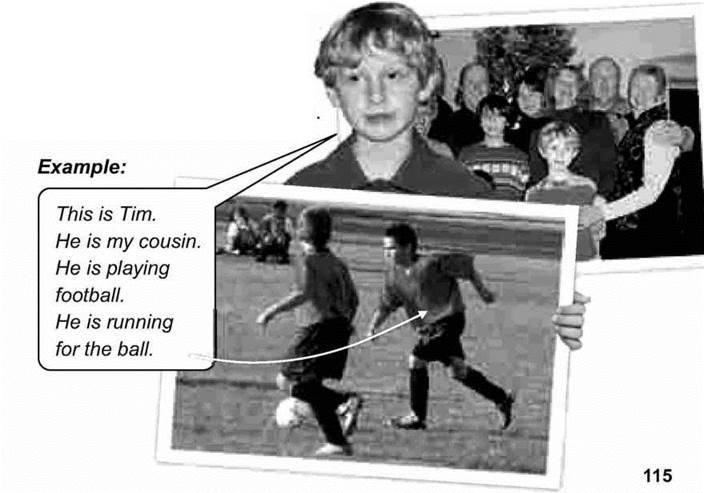AN APPLE A DAY
Unit 3 TIME FOR HOME
Lesson 2 AN APPLE A DAY
VOCABULARY
1 a) Match words with the pictures.
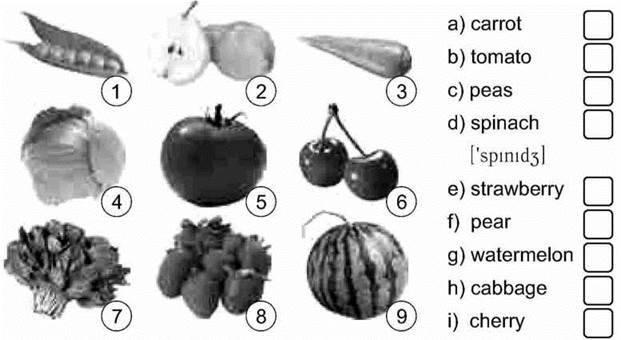
B) Say what fruit and vegetables you like.
2 Look at the picture for two minutes.
Shut the book and name all the things you remember.
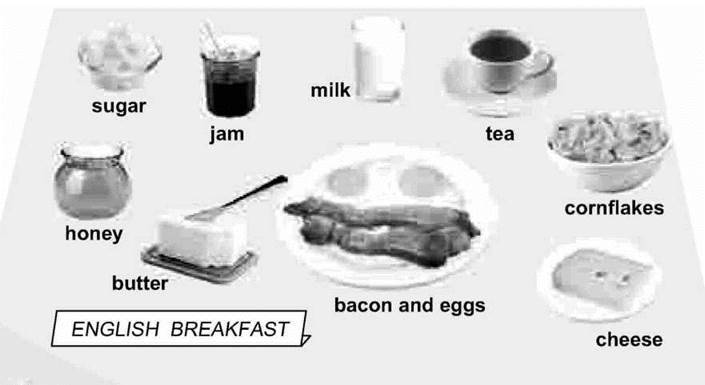
3 Read, guess and match.
It is small. It is round. It is red.
It grows on a tree.
It is green and yellow.
It grows on a tree. Bears like it.
It doesn’t grow on a tree.
It is small and red.
It doesn’t grow on a tree.
It is big and green.
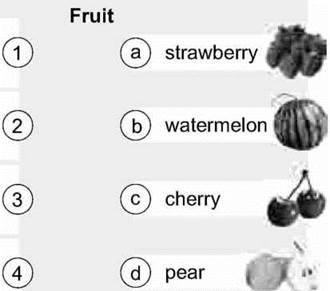
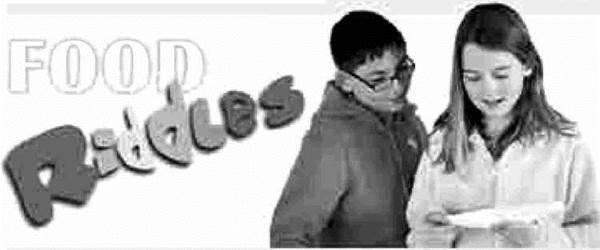
It is red. It is round.
We make ketchup from it.

They are small. They are round. They are green.

It has got green leaves.

Vegetables
It is long. It is orange. Rabbits like it very much.

READING
1 a) Answer the questions.
– Do you eat he>
B) Listen and read to find out if crisps and peanuts are he>

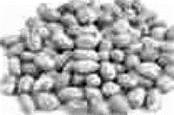
EAT WELL – FEEL WELL
The children are having Science. A doctor is talking about he>
Doctor: What food is rich in vitamins?
Class: Lemons, oranges, apples, pears…
Doctor: Yes, there are vitamins in fruit, vegetables, brown bread and in other food as well.
Class: Why do we need vitamins?
Doctor: They are important for your eyes, your skin and… your he>
Doctor: Yes, minerals are important for your teeth and your bones. And… don’t skip your breakfast. It is the most important meal. Don’t eat crisps and peanuts between your meals. And remember:

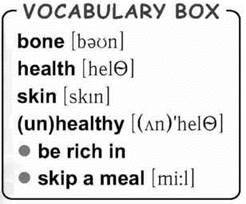
2 Complete the sentences.
1 ……….. are rich in vitamins.
2 There are vitamins in…, … and….
3 Vitamins are important for our…, … and….
4 We can find minerals in…, …, … and….
5 Minerals are important for our… and….
6 Breakfast is………
7 Don’t……… !
8 You must……….
3 Discuss the question in pairs.
– An apple a day keeps the doctor away.
Why?
4 Read to find out what Englishmen eat for breakfast, lunch and dinner.
ENGLISH MEALS
When an English friend invites you to his / her home to live for a week you can get an English breakfast in the morning: cereal with milk, bacon and eggs, toast, butter, jam and tea with milk.
The English usually have a quick lunch in their lunch break at about one o’clock in the afternoon.
They have a big dinner at about six when parents come home from work. It is their main meal.
Some people have supper at about 8 or 9 o’clock in the evening.
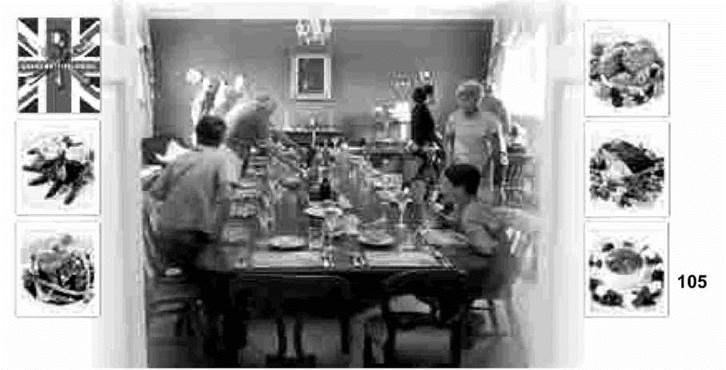
5 Say if it is true or false.
1 For English breakfast you can get bacon and eggs, of course.
2 They drink tea with lemon.
3 Lunch is the main meal for the English.
4 They have lunch about 1 o’clock in the afternoon.
5 Your English friend invites you for dinner when his/her parents come home from work.
6 English people never have supper.

LISTENING
1 Ask and answer in pairs.
– What do you eat in the morning?
– What do you eat for lunch?
– What do you eat in the evening?
2 a) Match words with the pictures.
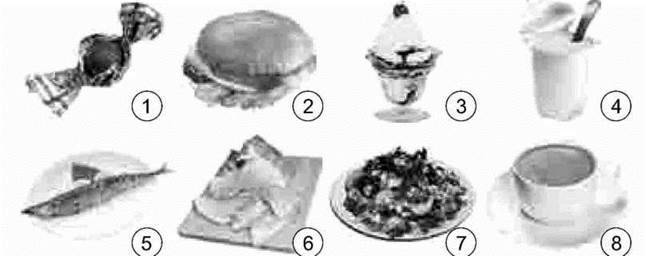
A) salad
B) cocoa
C) hamburger
D) yoghurt
E)candy
F) fish
G) ice-cream
H) ham
B) Listen to find out what
Pam and Mia have got for their meals.
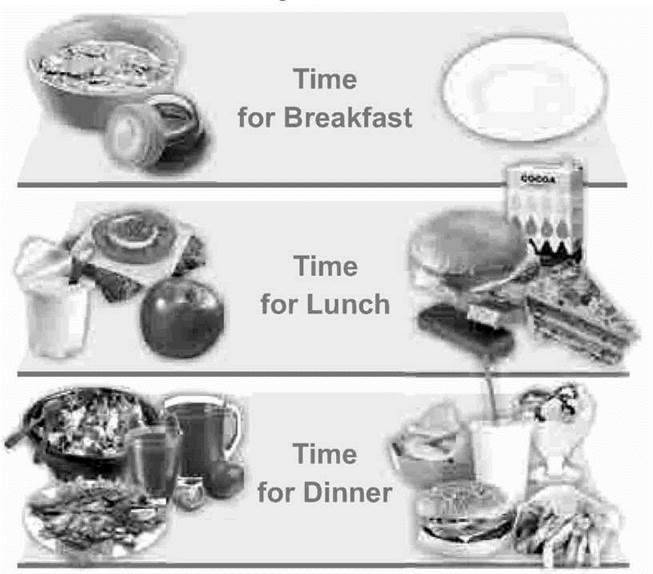
3 Answer the questions.
1 What does Pam usually have for breakfast?
2 Who skips breakfast?
3 What else is there on Pam’s table?
4 Does Mia get up early?
5 What is there in Pam’s lunch box?
6 What is there in Mia’s lunch box?
7 What do Pam and her mum often have for dinner?
8 Where does Mia’s family often go?
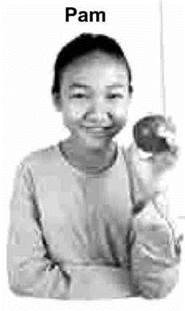
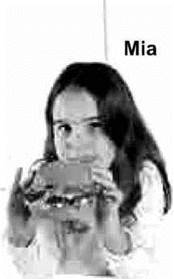
4 Draw two columns in your notebook. Listen again and fill in the columns with Pam’s and Mia’s food. Compare the food both girls have and say:
– Which food is good for he>
– Which is bad for he>
DO YOU KNOW?
Each country has its own favourite food.
In Italy it is spaghetti and pizza.
In France they like good cheese.
In England they drink tea with milk.

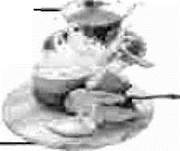
5 Speak on what you think our favourite food in Ukraine is.

GRAMMAR
REMEMBER!
COUNTABLES AND UNCOUNTABLES
(Злічувані та незлічувані іменники)
You can count:
Apples, tomatoes, sandwiches…
Example: three tomatoes, five apples
You can’t count:
Milk, cheese, fish, icecream, tea, coffee, meat.
We use there are with countables:
There are some eggs on the plate.
We use there is
With uncountables:
There is some milk in the glass.
1 a) Listen, find and repeat.
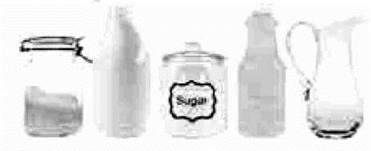
There’s some rice in the jar. There’s some milk in the bottle. There’s some sugar in the jar. There’s some oil in the bottle. There’s some water in the jug.

There are some apples on the plate.
There are some oranges on the table.
There are some eggs on the plate
There are some bananas on the table.
There are some lemons on the table.
There are some onions on the table.
B) Write if these nouns are countable or uncountable.
REMEMBER!
+ There are some tomatoes.
? Are there any tomatoes?
– There aren’t any tomatoes.
+ There is some water.
? Is there any water?
– There isn’t any water.
2 Listen, compare and practise.
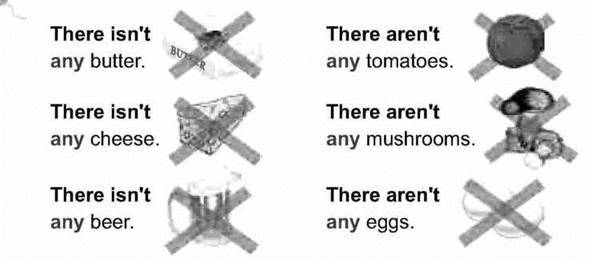
– Is there any cheese in the fridge?
– Yes, there is.
– Is there any butter in the fridge?
– No, there isn’t.
– Are there any eggs in the fridge?
– Yes, there are.
– Are there any tomatoes in the fridge?
– No, there aren’t.
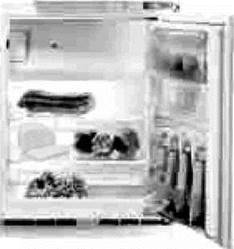
3 Ask and answer in pairs.
Use the example and the words in the box.
Meat, ice-cream, cakes, milk, eggs, fish, hamburgers, candies
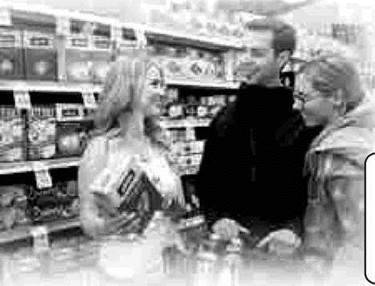
Example:
– Is there any meat?
– Yes, there is. (No, there isn’t.)
– Are there any cakes?
– Yes, there are. (No, there aren’t.)
REMEMBER!
MANY вживаємо зі злічуваними іменниками: There are many apples.
MUCH вживаємо із незлічуваними іменниками: There is much water.
4 Listen and practise.
A: There’s some butter in the freezer.
B: How much is there?
A: There is a lot. There are some hamburgers in the freezer.
B: How many are there?
A: There are a lot.
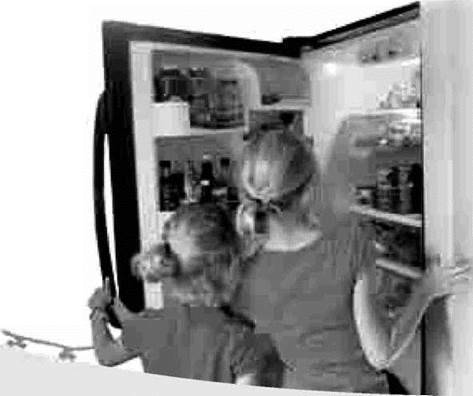
5 Fill in the gaps with ‘some’or ‘any’.
A) Have you got… brothers or sisters?
B) We don’t need… butter.
C) There are… books on the table.
D) I want… flour because I’m going to bake a cake.
E) Is there… milk in the bottle?
F) We don’t need… eggs.
REMEMBER!
The verb TO NEED
He needs some money.
She doesn’t need any bread.
Do you need any plate?
SPEAKING
1 Think what’s in your fridge at home. Ask and answer in pairs. Example:
A: There is some milk.
B: Are there any eggs?
A: No, there aren’t.
2 a) Listen to the dialogue and say where it takes place in.
A: Can I help you?
B: Yes. Can I have a hot dog and fries, please?
A: Here you are.
Anything to drink?
B: Yes, a milkshake, please.
A: So, a hot dog and fries, and a milkshake.
B: Thank you. How much is that?
A: 3.90 >
B: Here you are.
A: Here’s the change.
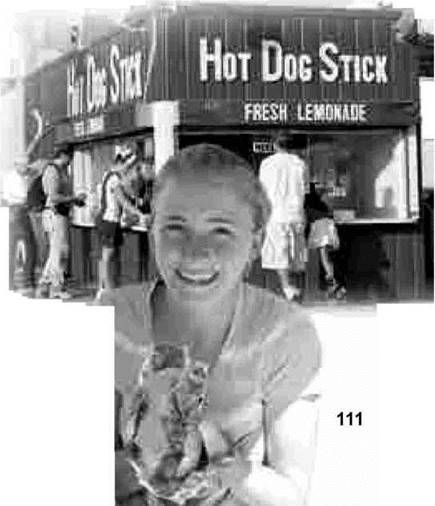
B) Act out the dialogue in pairs.
REMEMBER!
– How much is the cake?
– It’s 30 hryvnias.
3 Complete the dialogue with phrases from (a) to (c).
A: What do you eat every day?
B: ………………………………………..
A: How about breakfast?
B:…………………………………………
A: We’re studying food at the moment. I’m asking my friends about eating habits. What else do you eat?
B:…………………………………………
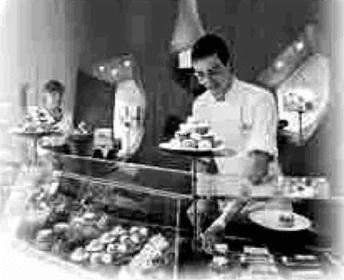
A) It’s hard to remember! I sometimes eat lots of sweets!
B) I eat some breakfast cereal – you know, cornflakes. I usually drink some tea.
Why do you ask?
C) Well, at school I sometimes eat an apple or a banana at break time, and I drink some milk. I have lunch at school.
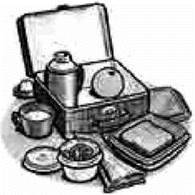
4 Role-play the situation in pairs.
Jane goes to a food shop. Look at the lists below and act out the dialogue.
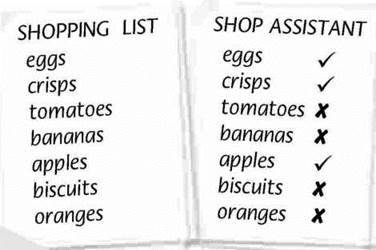
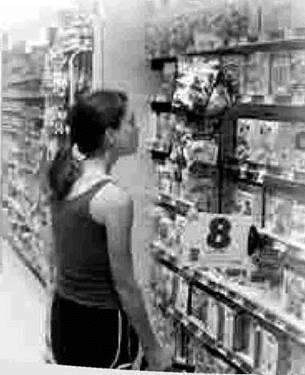
Jane: Have we got any…?
Assistant: Yes, we’ve got some… / Sorry, we haven’t got any…
5 Discuss in a group.
– What about your meals?
– What time is your main meal?
WRITING
1 Make a poster about food.
FILE FOR PROJECT
1 Find pictures of food in old magazines.
2 Cut out the food and drinks you can name.
3 Paste them on two big pieces of paper.
4 Write the titles: GOOD FOR HE>
5 Write the captions1 under each picture.
6 Present it in class.
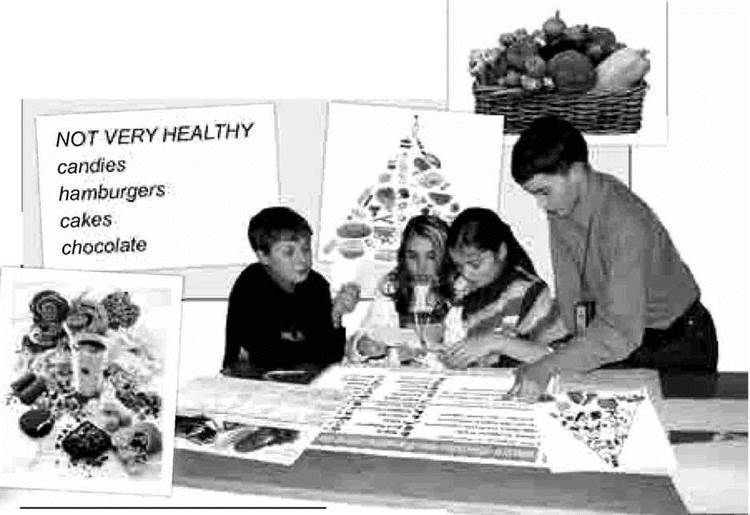
1a caption – підпис (під ілюстрацією)
LOOK BACK!
1 a) Before listening a rhyme read and think.
There are more than 6 billion people in the world. At this moment they are all doing something. What are they doing?
B) Listen and read.
THE WORLD IN ACTION
Believe1 it or not this story is true.
It talks about people like me and like you.
It talks about people at this moment of time.
It’s not a real story in fact – it’s a rhyme.
In China a Chinese is chewing gum2,
In France a Frenchman is having fun.
A German in Germany is cooking noodles3,
An Australian in Australia is baking strudels.
An Italian in Rome is singing a song.
An American from New York is singing along.
In England a lady is drinking tea.
In my country someone is thinking of me.
C) Ask and answer in pairs.
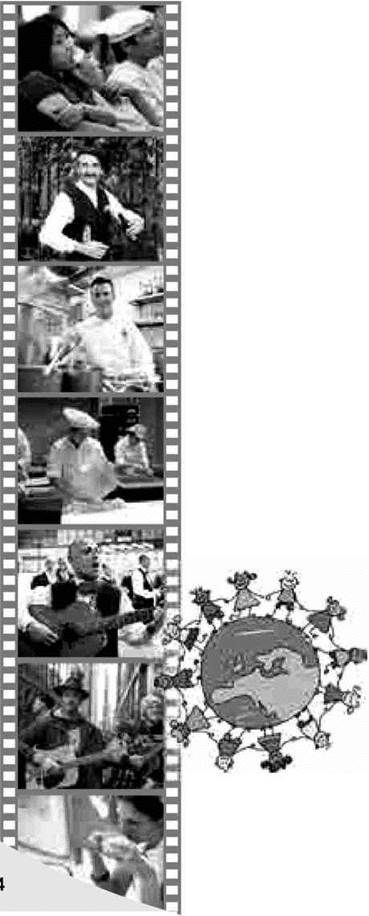
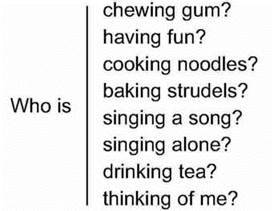
1to believe [bi’li:v] – вірити
2a chewing gum – жувальна гумка
3noodle [‘nu:dl] – локшина
2 a) Listen to find out what game Pam’s class is playing.

B) Play this game in your class.
Always write who you are in your notebook.
3 Describe your family photo.
1 Bring family pictures to school.
2 Prepare a one-minute talk about the photo.
3 Say who they are, what they are / he is / she is doing
